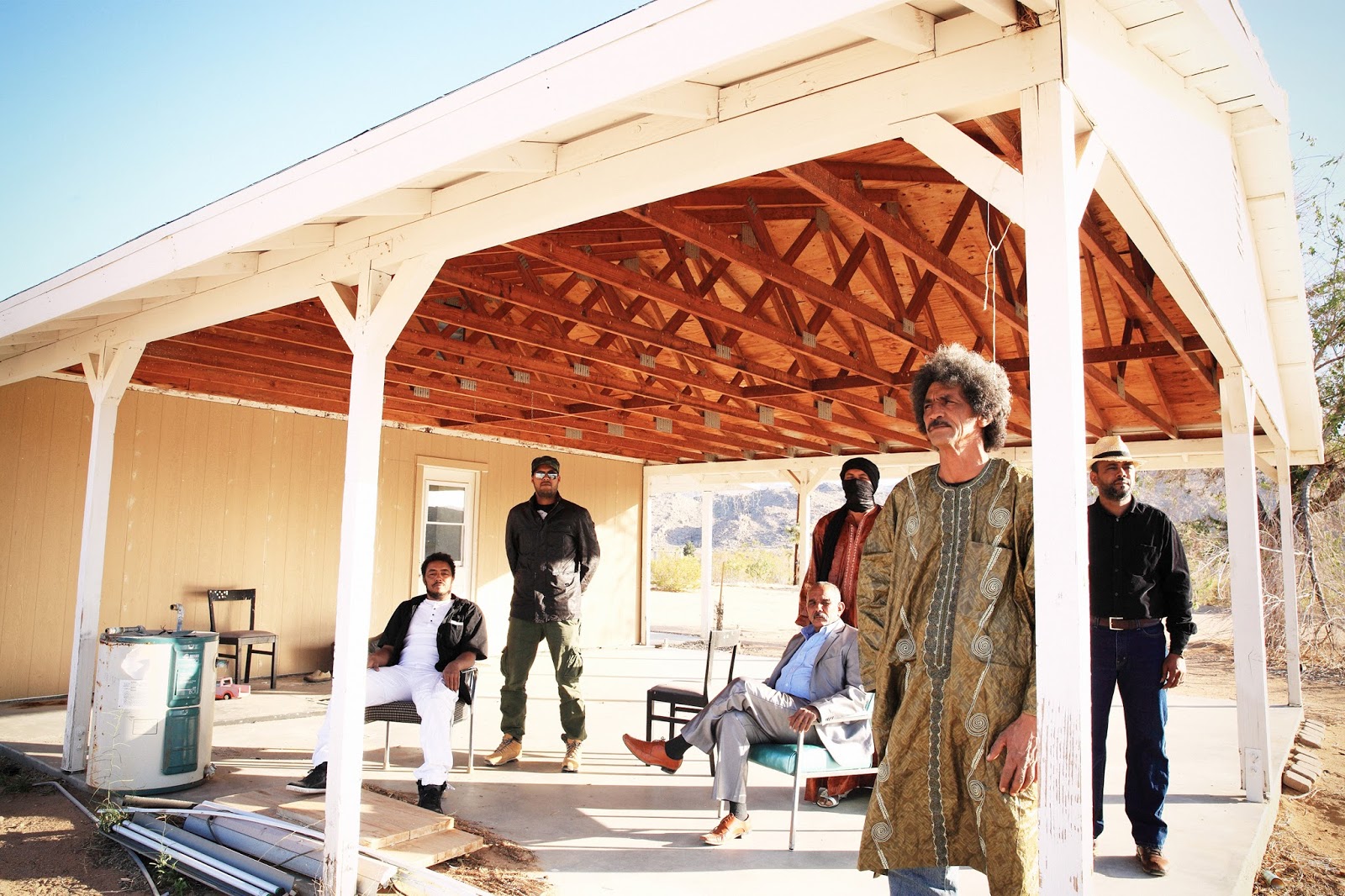 Let’s talk about blues music for a second. Everyone knows what it is, knows the history of it. Poor black musicians from the south, Robert Johnson and the devil, Led Zeppelin refusing to credit Blind Willie Johnson, etc, etc. I’m sure you’ve heard all the stories before.
Let’s talk about blues music for a second. Everyone knows what it is, knows the history of it. Poor black musicians from the south, Robert Johnson and the devil, Led Zeppelin refusing to credit Blind Willie Johnson, etc, etc. I’m sure you’ve heard all the stories before.
But did you ever stop and think about just where it came from? What we call blues music didn’t just spring up overnight. It has a long history; a history stretching back further than most people care to think, with ties to traditional music forms in other continents, in places where we like to think our music is what inspires theirs.
Formed in 1979, Tinariwen is a band that’s also been around for a while. They play a style of music called Tiscoumaren, which has also been around a while in various forms. Essentially, it’s a dry, dusty desert blues, with guitar work that’s reminiscent of John Lee Hooker. But not really: Tinariwen’s music has much wider influences.
Tinariwen’s style of dry blues has roots throughout African musicians, sounding just as much like Jimi Hendrix as it does Ali Farka Toure. For new listeners, Tinariwen will sound a little familiar, but come at you from new, surprising angles. But don’t let that fool you: while Tinariwen’s music is sung in a foreign language, it’s just as immediate and gripping as anything coming out of the South. It’s actually even a little better.
In the past, Tinariwen is a band that’s recorded in a tent in the desert and in makeshift studios for anyone who’d supply a blank cassette. For their latest full length Emmaar, Tinariwen moved to southern California to record. It sounds like a sudden departure, until you remember they weren’t too far from where U2 felt inspiration: Joshua Tree, California.
If Tinariwen’s music seems dusty, it never seems dry. Driving hand percussion propels the music along while a droning bass keeps it anchored. And the guitars! They twang, click, and shift like snakes. On “Arhegh Danagh,” the guitars riff against each other, settling into a killer groove, while on “Timadrit In Sahara” they’re fuzzed out and crackle with energy.
For me, the two standout tracks are on the Emmaar’s second half. One’s the pulsating “Imdiwanin ahi Tifhamam”. On this song Tinariwen start out in an otherworldly figure, quickly settling into a rhythm of hand claps, drums, and chanted vocals. Meanwhile, “Koud Edhaz Emin” begins with a lone guitar, but slowly builds up: hand claps, vocals, and a second guitar. Before long drums, steel guitar, and thumps of bass emerge: it’s almost a spacious desert funk.
 I can see Emmaar’s vague foreignness scaring away prospective listeners. It’s sung primarily in Tamasheq, I believe, which is reason enough for some to keep their distance. But don’t let that keep you away from Emmaar. The chugging, relentlessly shifting guitars, the propelling rhythm, and chanted vocals are universally appealing and immediately recognizable for any blues fan. And, yes, the liners do provide translations for their lyrics for the curious.
I can see Emmaar’s vague foreignness scaring away prospective listeners. It’s sung primarily in Tamasheq, I believe, which is reason enough for some to keep their distance. But don’t let that keep you away from Emmaar. The chugging, relentlessly shifting guitars, the propelling rhythm, and chanted vocals are universally appealing and immediately recognizable for any blues fan. And, yes, the liners do provide translations for their lyrics for the curious.
Forget guitarists with racks of equipment and a board full of pedals and gadgets. Tinariwen’s Emmaar is where the real guitar playing has been hiding: each time I listen to it, I notice something new happening. It’s an exciting, fun listen. Challenge yourself and pick this one up.
Rating: 4/5


